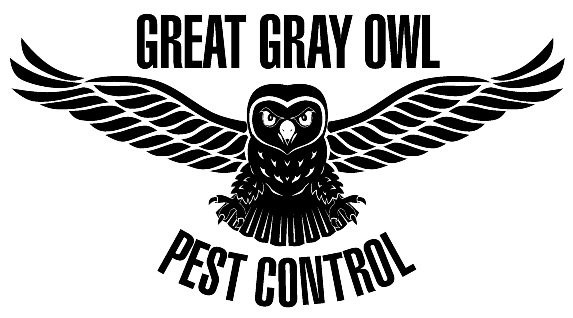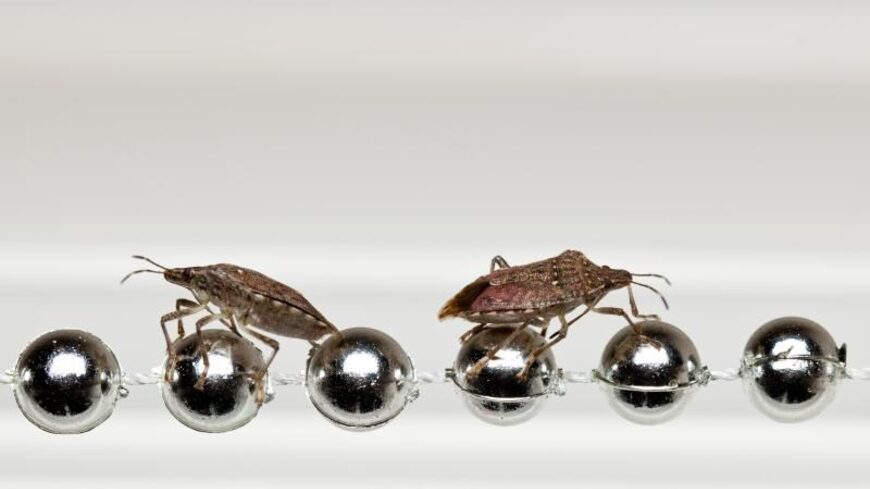Stinkbugs
If stinkbugs (Halyomorpha halys) choose your home or cottage to overwinter, call us at 705-426-1903 or toll-free 1-877-882-4403 for a quote or send us your information by email with the contact form on this page. We provide service for stinkbugs in the spring and fall. While stinkbugs are not known to cause harm to humans, homeowners are often alarmed by their presence. The stinkbug does not reproduce indoors or cause any structural damage. If they are squashed or sucked into a vacuum cleaner, you'll discover why they're named stinkbugs.
Adults of the brown marmorated stinkbug (Halyomorpha halys) are approximately 17 mm long (25 mm = 1 inch) and are shades of brown on both the upper and lower body surfaces. They are the typical shield shape of other stinkbugs and almost as wide as they are long. Distinguished from other stinkbugs by lighter bands on the antennae and darker bands on the membranous, overlapping part at the rear of the front pair of wings. They have patches of coppery or bluish metallic colored punctures (small, rounded depressions) on the head and pronotum. The name stinkbug refers to the scent glands located on the dorsal surface of the abdomen and the underside of the thorax.
The eggs are elliptical (1.6 x 1.3 mm), light yellow to yellow-red with minute spines forming fine lines. They are attached, side-by-side, to the underside of leaves in masses of 20 to 30 eggs.
There are five nymphal instars (immature stages). They range in size from the first instar at 2.4 mm to the fifth instar that is 12 mm in length. The eyes are a deep red. The abdomen is a yellowish red in the first instar and progresses to off-white with reddish spots in the fifth instar. Protruberances are found before each of the abdominal scent glands on the dorsal surface. The legs, head and thorax are black. Spines are located on the femur, before each eye, and several on the lateral margins of the thorax.
Life History
Depending on the temperature, this species may have a single generation or up to two or three generations per year during warm spring and summer conditions. Adults emerge from late April to mid-May, mate and deposit eggs from May through August. The eggs hatch into small black and red nymphs that go through five molts. Adults begin to search for overwintering sites starting in September though the first half of October. These sites sometimes include homes, cottages and other buildings.
Stinkbugs are an important agricultural pest in North America. In 2010, it produced severe losses in some apple and peach orchards by damaging the fruit. It also has been found feeding on blackberry, sweet corn, field corn, soybeans, tomatoes, lima beans and green peppers.
Preventive Measures
This following preventive advice applies to all pest insects that migrate indoors in the fall to overwinter, such as cluster flies, ladybugs, boxelder bugs and others:
Mechanical exclusion is the best method to keep stinkbugs from entering homes and buildings. Cracks around windows, doors, siding, utility pipes, behind chimneys, and underneath the wood fascia and other openings should be sealed with good quality silicone or silicone-latex caulk. Damaged screens on doors and windows should be repaired or replaced.
Inside your home, stinkbugs will emerge from cracks under or behind baseboards, around window and door trim, and around exhaust fans or lights in ceilings. Seal these openings with caulk or other suitable materials to prevent the insects from crawling out.
Both live and dead stinkbugs can be removed from interior areas with the aid of a vacuum cleaner, however, the vacuum may acquire the scent of the bugs for a period of time.
What Attracts Stinkbugs to the Indoors
by Susan Dorling
Millions of brown marmorated stinkbugs, or BMSB, invade North American homes every year. You probably wonder why these relentless critters are almost magically drawn to the indoors -- it’s a purely natural attraction. Their passion to get inside your home is triggered by the fall equinox -- an intriguing astronomical event that also compels other insects, such as cluster flies and Asian lady beetles, to seek shelter. Once entrenched, they hibernate and spend the winter...
Read more



